Battle of Fort Sumter
The Battle of Fort Sumter was, in and of itself, a small and insignificant engagement; but it served as the opening hostility of the American Civil War, and this seemingly minor conflict would unleash the full fury of war...
On December 20, 1860, South Carolina officially seceded from the Union, and demanded that all United States forces evacuate Charleston Harbor. At that time the small number of US forces at Charleston were under the command of Major Robert Anderson (below left).
Rather than surrender his command, Major Anderson took action on the evening of December 26. He gathered his entire command (roughly eighty five men then stationed on the mainland at Fort Moultrie), and secretly moved them all, under cover of darkness, to the island stronghold of Fort Sumter.
Despite being in a very defensible position, Anderson needed more men and supplies to be able to hold his ground against a determined attack. He sent word to Washington asking for assistance, and help was soon on the way.
That help came in the form of the Star of the West, a merchant ship loaded with supplies and 200 men to bolster Anderson's defense, but the South Carolinian defenders did not intend to allow Anderson to be relieved. On January 9, 1861, the Star of the West sailed into Charleston Harbor, but before she could reach Fort Sumter she came under heavy fire and was forced to turn back.
Therefore, Major Anderson was left alone, undermanned and under-supplied, to face the unrest that was brewing in Charleston.
After Anderson had consolidated his forces at Fort Sumter, the South Carolina militia forces had seized all other US property in Charleston, including the local armory. So, while Anderson was isolated, the South Carolina forces were quickly arming and readying themselves to attack.
In March, things got even more interesting...
...the new Confederate Government took over the direction of the siege, and the forces in Charleston were placed under the command of General P. G. T. Beauregard (above right). It is interesting to note that Anderson had been Beauregard's artillery instructor at West Point, and the two were said to be close friends.
Beauregard determined to end the siege by cutting off all sources of supply for Fort Sumter (up to then, Anderson's men had been allowed to purchase food from Charleston), and force the fort to be evacuated for lack of supplies. This move increased the likelihood that there would be a Battle of Fort Sumter.
In early April, Abraham Lincoln informed the Confederate leadership that he intended to resupply Fort Sumter, and sent a small fleet to carry this out. The Confederate high command decided that they could not allow Anderson to be resupplied, and on April 11, Beauregard sent his aides to Fort Sumter with a demand for surrender. Anderson refused the demand and sent this message back:
"I have the honor to acknowledge the receipt of your communication, demanding the evacuation of this fort, and to say in reply thereto, that it is a demand with which I regret that my sense of honor and of my obligation to my Government prevent my compliance."
At 3:20 on the morning of April 12, 1861, General Beauregard informed Major Anderson that he would begin bombarding him in one hour. The Battle of Fort Sumter was about to begin...
The Battle
General Beauregard had 43 guns positioned around the harbor, and ordered them to fire counterclockwise, in sequence, at two minute intervals. He issued this command in an effort to conserve his ammunition, which he feared would only last for about 48 hours.
The gun chosen to fire the first shot and signal the opening of the Battle of Fort Sumter (right), was positioned in Fort Johnson. The first shot of the war was fired by Captain George S. James...
...and one of the Charleston papers described what came next:
"...at twenty-five minutes past four o'clock, A. M., the circle of batteries with which the grim fortress of Fort Sumter is beleaguered opened fire. The outline of this great volcanic crater was illuminated with a line of twinkling lights; the clustering shells illuminated the sky above it; the balls clattered thick as hail upon its sides..."
Despite having 60 guns at his disposal, Anderson was only able to use a handful of those because of his small force and inadequate supply of ammunition. He held his fire until daybreak, but then his men began to return fire:
"The firing now began in good earnest. The curling white smoke hung above the angry pieces of friend and foe, and the jarring boom rolled at regular intervals on the anxious car. The atmosphere was charged with the smell of villainous saltpetre, and as if in sympathy with the melancholy scene, the sky was covered with heavy clouds, and everything wore a sombre aspect."
The relief fleet began to arrive throughout the first day of the bombardment, but due to the furious artillery fire, they were unable to land any supplies. Another attempt was made, under cover of darkness, to carry supplies to the fort aboard small boats; but they turned back due to heavy seas.
On the second day of the Battle of Fort Sumter, Saturday April 13, the bombardment continued as, "The batteries continued at regular intervals to belch iron vengeance..."
The US Navy ships took no part in the fighting, and made no attempt to aid the garrison at Fort Sumter, despite the fact that they were in obvious distress.
On several occasions, small fires had started in the fort, but the garrison had been able to put them all out. Finally, by mid-day most of the wooden structures in the fort were burning and there was no hope of putting them out. One of Anderson's officers described the conditions:
"One-fifth of the fort was on fire, and the wind drove the smoke in dense masses into the angle where we had all taken refuge. It seemed impossible to escape suffocation."
That afternoon, Anderson felt that he and his men had done enough to defend their honor, and he agreed to the following terms of surrender:
"That is - First affording all proper facilities for removing him and his command, together with company arms and property and all private property.
Secondly - That the Federal flag he had so long and so bravely defended should be saluted by the vanquished on taking it down.
Thirdly - That Anderson should be allowed to fix the time of surrender; to take place, however, some time during the ensuing day (Sunday.) "
The Battle of Fort Sumter was over, but the true impact of this event was yet to be felt...
The Fallout of Fort Sumter
Amazingly, no lives were lost on either side during the Battle of Fort Sumter. Unfortunately, such good fortune could not be expected to last for long...
On the afternoon of April 14, as Anderson was officially surrendering the fort, the Union forces began firing a 100 gun salute to the flag (left) as it was lowered. During the salute, some spare cartridges exploded, killing two Union soldiers and wounding four more. The salute was stopped after 50 guns, and Anderson and his men evacuated the fort.
Thus the Battle of Fort Sumter came to an end, but it was just the spark that lit the mighty fire of war. Sadly, many lives would be lost over the next four years, before the "mighty scourge " came to an end.
In February 1865, Union forces under General William T. Sherman took Charleston, and recaptured Fort Sumter. On April 14, 1865, the same flag (above) that had been taken down four years before, was raised over the fort during a celebration of its recapture.
In that celebration, we can see the importance with which the seemingly minor Battle of Fort Sumter was viewed, even as the Civil War was coming to a close.
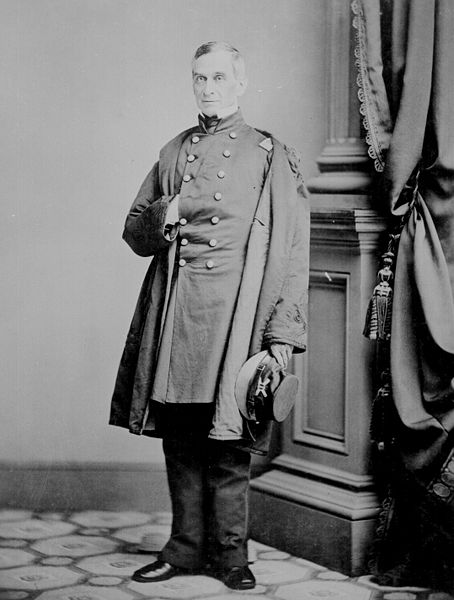
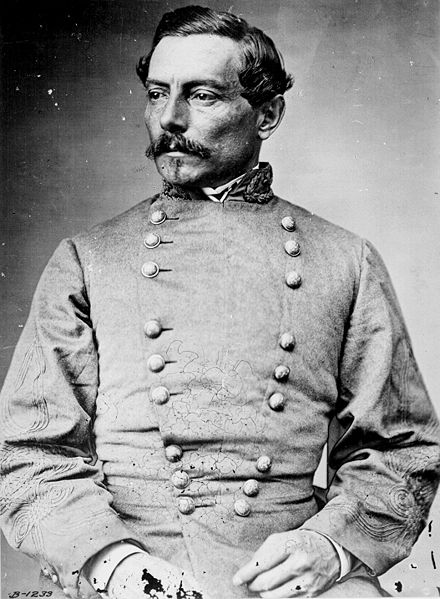

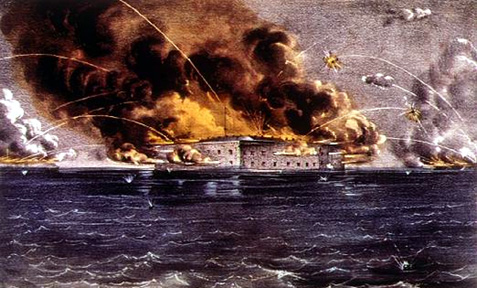
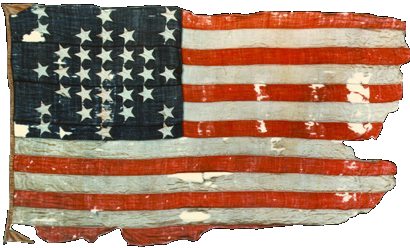
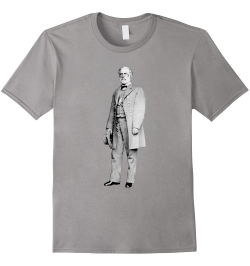


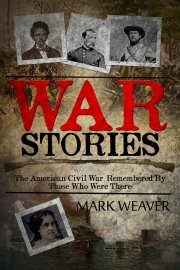

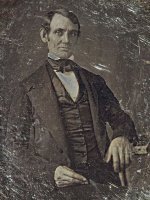
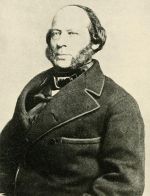
New! Comments
Have your say about what you just read! Leave me a comment in the box below.